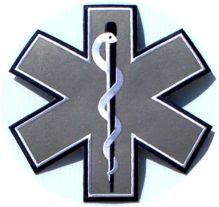6 Simple Ideas to Protect your Business in an EmergencyBy Steven Hull & Julie Moore
- Know how to forward the business phone elsewhere (other office, cell phones, etc.) If not answered by a human, your calls should go to an answering machine so they are not lost.
- Answering machine message(s) should be updated each day during the emergency so customers and vendors see you are actively working on the problem and have not gone out of business (even if you are not able to return every call immediately).
- Know how to update and change your website. Have a prepared email and email list to send out to update your clients, vendors and employees (separate messages and lists, of course) with what is going on. Explain to your clients that you are still in business and working to resolve the problems and appreciate their support during this temporary issue.
- During a business emergency, the company must start doing things to either help the business stay open or return to operations as soon as possible. Don’t wait until the insurance company has completed inspections; and don't just send everyone home without a plan or a way to contact them.
- Pre-plan or create a “Crisis Team” of employees and management to get things done during the emergency. Avoid the reaction of sending everyone home and coming back the following Monday to hear what the emergency plan will be. Many of your employees can do great things and come up with fantastic solutions to changing problems if you band together to solve the problem.
- If the emergency involves more than just your business, see if you can band together to share resources, trucks, signage, etc. and ideas to help get back in business faster and reduce damage and downtime for everyone. I have even seen competitors help each other out and build better ties as a result.
- For short power problems, Universal Power Supply (UPS) units can keep your phones, registers, and computers working for the first few hours of a outage. Using portable, low-power lighting can make things safe for your employees and customers. These items can be also very low cost. Planning to reduce your power use is key to extending the hours you are open. For instance, switching over to using your Laptop connected to your UPS will extend the computing time to continue work, ringing in sales, communicating with customers from 1-2 to 6-8 hours or more. (Have the software you would need, pre-installed in the laptop and tested, in case it is needed.)
- Plugging in things like power converters to cars and trucks, car cellphone chargers, portable generators (outside only) with good extension cords to your UPS units will keep many items running still power is restored or until your plan “B” is ready. (Read safety and power directions before the emergency to avoid blowing fuses.)
- During emergencies and disasters of different lengths, everyone builds up stress and many will overwork themselves. Motivate your staff and managers. Praise the work that is being done to stay open or get back open faster.
- Longer hours means making sure you and your people take breaks, get extra snacks and fluids (sorry no alcohol), and time to sleep. Inject a little fun from time to time as you see fit to lighten the mood.
- You will see the employees that go the extra mile. Don’t forget to reward them when things calm down. This problem could transform your business and staff for the better and help you pass your competitors in the same situation.
- Understand that some employees don't share your passion to help your business survive and will abandon you. This comes with the territory; expect that some will leave and return only when asked or do the bare minimum.
- In emergencies, people sometimes confuse coming up with a creative solution to opting for a dangerous solution because, “after all it’s an emergency!” Don’t climb down the outside of a building when you could just walk down a stairwell.
- Although you are working to save your business, it's absolutely critical to obey police lines and emergency worker's directions. If you or your co-workers are told to evacuate the building, do so without hesitation. Don't re-enter a condemned building. These rules are there for your protection and no one at this time can afford to have an employee injured or killed.
- In evaluating the solution, imagine what the successful outcome should be 3-6 hours from now and if you think this idea can get you there. On a big task hours later, if the idea is really not getting you any closer to your goal, it is OK to try stop and try something else.
- Business interruptions, and emergencies come in all sizes shapes and durations. Implement your contingency plans, motive and educate your employees for the possibility of business problems. When a problem begins activate your plans as early as possible to have maximum flexibility and options available to you. Stay objective and realize that unforeseen problems will come up that you had not thought about. You need to stay flexible and do the best do can as the event evolves. With a little forethought you probably will be doing much better than you think you are at the time.
- When an event happens, remember to make a few notes as you go along of things to fix for next time, resources you could have had and questions you can't get answers to. Use these notes to revise your company plans to be better prepared for next time. Yes, there will be a next time.

